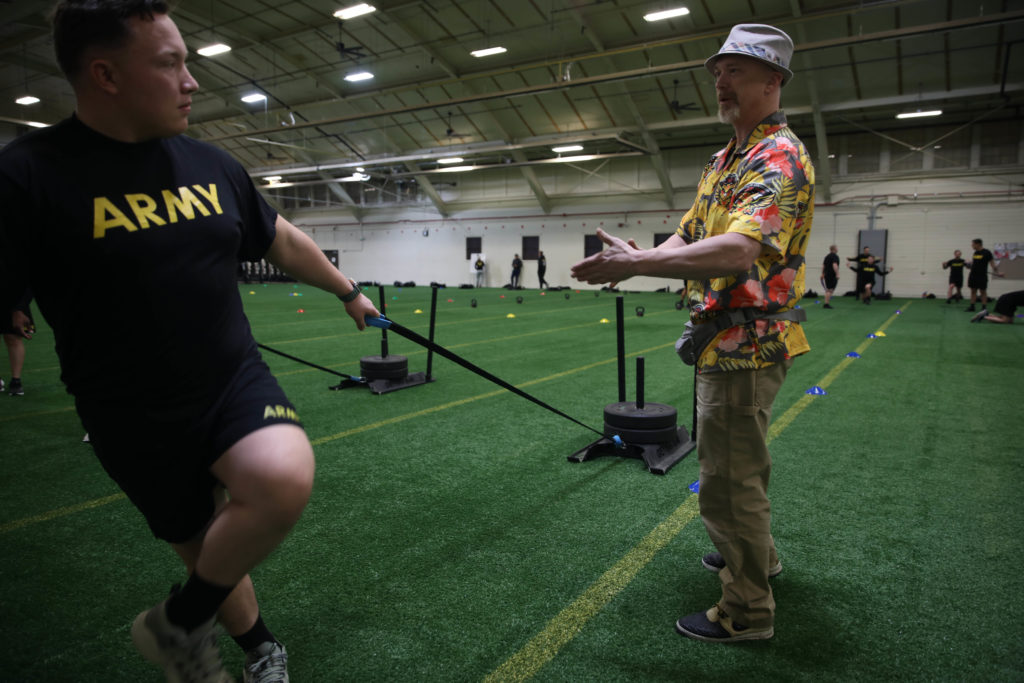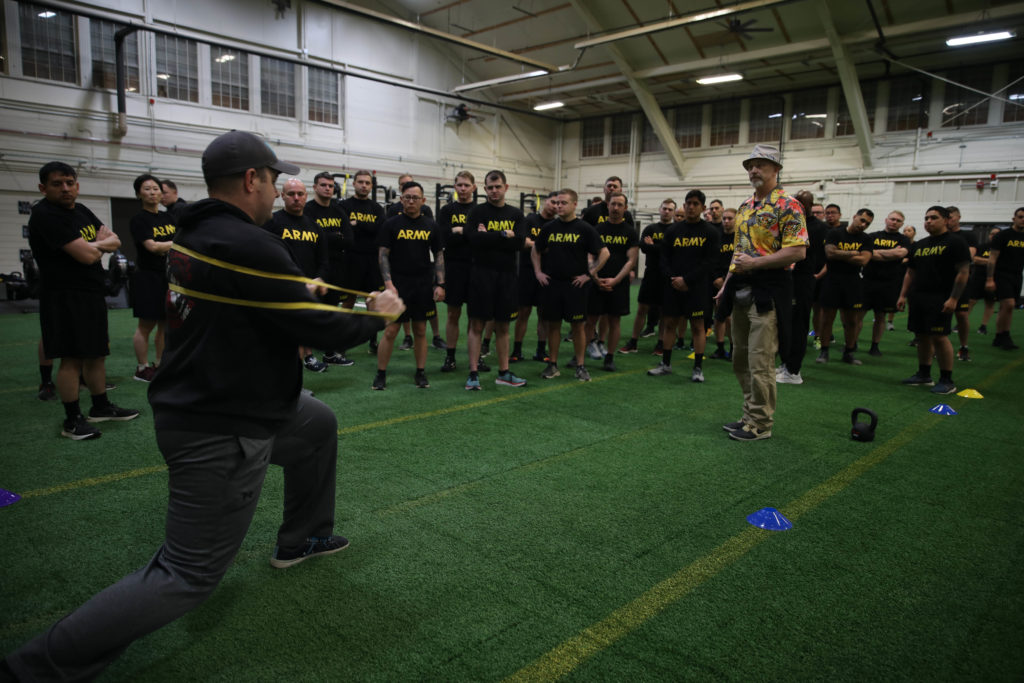Winter 2023
Q&A with an Army H2F program director

Mark Taysom is the Holistic Health and Fitness (H2F) Program Director for the 10th Mountain Division’s Combat Aviation Brigade at Fort Drum, NY. His team of 30 interdisciplinary professionals is charged with the performance readiness of the brigade’s 3,000 soldiers.
Mark has been involved in human performance for more than 20 years as an athlete and a coach. A Certified Strength and Conditioning Specialist, Mark is a former Strongman National Champion, previously worked at the U.S. Olympic Training Center and in the NFL, and was an adjunct instructor for exercise science at Arizona State University and Grand Canyon University.
“Ever the teacher, Mark always has a tailor-made thread of wisdom concerning health and wellness which he is able to expertly, and in a genuinely compassionate way, connect with his soldiers and employees,” remarked his previous brigade commander, Col. Travis Mcintosh. “Mark has done more for the overall well-being of the soldiers of the 10th Combat Aviation Brigade than perhaps anyone else.”
Tactical Training & Conditioning: What made you want to be a part of H2F?
Mark Taysom: I helped start the initiative more than ten years ago at Fort Carson with the Iron Horse Performance Optimization Program. The spectrum of various needs, abilities, and motivations in the Army is unmatched anywhere else.
Additionally, in the civilian realm of sports medicine, there is always the suspicion of the dollar. An athlete or client may question a coach’s motives, thinking they are just trying to make a buck. In the Army, the soldier never has to ask if what I am saying has the alternative motive of money. Working in the Army allows me to have those honest and strong relationships with soldiers much quicker. Plus in the private sector, an individual can only train to the level of their budget. Soldiers do not pay out of pocket for my services; therefore, their wallet doesn’t determine their success. H2F gives me the environment to help every soldier without hindrance.
TT&C: What makes H2F different than what the Army has done before?
MT: The Program Director is a civilian, which gives more stability and experience to the program. I also report directly to the brigade commander. This allows H2F to make changes to initiatives and practices in a timely manner to stay effective.
Additionally, H2F teams are embedded in the brigade footprint. This allows face-to-face interactions with soldiers in all aspects of their daily workday. If they don’t see you, they don’t know you. If they don’t know you, they don’t trust you. If they don’t trust you, they don’t utilize you. You can’t help people very well if they don’t know you exist.
Lastly, and most importantly, our H2F team is better resourced with talent than ever before. Our team has a broad range of experience in each of the Army’s five readiness domains. We have former collegiate athletes, a Muay Thai national champion, and even a tap dancer. We also have more than 10 providers to speed up access to care on the medical side. Collectively there is going to be very little we can’t handle.
TT&C: Have you noticed a change in the brigade’s fitness culture with H2F?

MT: Yes. There is a long list of things that can be aggregated to show a great impact, but one statistic we have been tracking since the beginning of our H2F program is foot-traffic through our building. In the first weeks of the program, traffic through our building was under 500 soldiers a month. Today we average over 2,000 a month through that same building, but the exciting part is that we now function out of six different buildings! Our total soldier face-to-face contacts in all buildings as a team easily exceed 5,000 a month, which is even more impressive when you consider our brigade consists of less than 3,000 Soldiers in total.
Like I say if you want to find the honey, follow the bees! If we weren’t having a positive impact on the Soldiers they wouldn’t keep coming in. We also have the National Guard, Army Reserves, local universities, and division units reaching out to us quite regularly.
TT&C: Have you seen an increase or improvement in individual Soldier readiness as a result of the H2F Performance Team?
MT: Individual soldier connection is the fundamental trait that welds H2F into the hearts and minds of the brigade. We have seen a soldier with severe tremors go from being unable to get out of bed in the morning without assistance to lifting heavy weights and ruck marching. One soldier suffered a catastrophic injury, only to be rehabilitated by H2F and later set Pennsylvania state powerlifting records. We also had several soldiers seek out H2F because of severe depression and feelings of self-harm, rise above that struggle, and find renewed joy and purpose through H2F and their friendships with H2F team members.
» ALSO SEE: NH Police Chiefs Ask to Drop Required Fitness Test
TT&C: What are some of the challenges your team has faced?
MT: One challenge that faces a lot of teams across the Army relates to building a unified H2F program. Many team members are young in the profession and are learning to collaborate not only with the soldiers, but also with each other. We were successful by deliberately establishing an official H2F team culture. Have a written vision statement, mission statement, motto, coaching principles/standards, and a true and defining logo that represents the team. All of this gives our team a foundation or “common language” from which we can bond and create a unique culture that inspires and directs our team members and gives the soldiers something to hold us accountable to.
TT&C: Any lessons learned on how units can best utilize the SMEs on their H2F Performance Teams?
MT: Units should meet with their H2F Director and team leads and see what they can build for H2F, and most importantly learn to really prioritize physical training by scheduling unit PT with H2F strength coaches outside of the 0630-0800 window. Only then will culture really begin to change for the better.



